Acupuncture CPT Codes
Acupuncture CPT (Current Procedural Terminology) codes are essential for medical billing, insurance reimbursement, and regulatory compliance. These codes classify acupuncture services, ensuring accurate documentation and proper compensation from insurance providers.
Correct CPT code usage prevents claim denials, streamlines billing, and ensures timely payments for acupuncture treatments. Additionally, integrating ICD-10 diagnosis codes, following Medically Unlikely Edits (MUE) values, and adhering to best practices in insurance billing can further improve accuracy and efficiency in reimbursement.
This guide covers acupuncture CPT codes, related physical therapy-based codes, how to use them correctly, ICD-10 codes for acupuncture treatments, MUE values, and insurance billing best practices to optimize revenue and avoid compliance issues.
Acupuncture CPT Codes
Acupuncture CPT (Current Procedural Terminology) codes are essential for medical billing, insurance reimbursement, and regulatory compliance. These codes classify acupuncture services, ensuring accurate documentation and proper compensation from insurance providers.
Correct CPT code usage prevents claim denials, streamlines billing, and ensures timely payments for acupuncture treatments. Additionally, integrating ICD-10 diagnosis codes, following Medically Unlikely Edits (MUE) values, and adhering to best practices in insurance billing can further improve accuracy and efficiency in reimbursement.
This guide covers acupuncture CPT codes, related physical therapy-based codes, how to use them correctly, ICD-10 codes for acupuncture treatments, MUE values, and insurance billing best practices to optimize revenue and avoid compliance issues.
Key Takeaways
-
Acupuncture CPT codes ensure accurate billing by classifying treatments like manual acupuncture (97810, 97811) and electroacupuncture (97813, 97814).
-
Using acupuncture CPT codes correctly reduces claim denials and supports faster insurance reimbursement.
-
Each acupuncture session must be properly documented, including treatment type, session duration, and medical necessity supported by ICD-10 codes.
-
Acupuncturists can optimize revenue and compliance by following MUE guidelines, using appropriate modifiers, and pairing CPT codes with correct diagnosis codes.
4 Essential Acupuncture CPT Codes
These four CPT codes are used to bill acupuncture treatments, distinguishing between manual acupuncture and electroacupuncture, as well as between initial and subsequent treatment units.
| Treatment Type | Initial 15 Minutes | Each Additional 15 Minutes |
| Manual Acupuncture (no electrical stimulation) | 97810 | 97811 |
| Electroacupuncture (with electrical stimulation) | 97813 | 97814 |
97810 – Manual Acupuncture, Initial 15 Minutes
- This code is used for the first 15 minutes of acupuncture treatment when the practitioner inserts needles without electrical stimulation.
- Face-to-face time with the patient must be documented, including assessment and needle retention.
- Only one unit of 97810 can be billed per visit, even if treatment extends beyond 15 minutes.
- If the session continues beyond 15 minutes, 97811 must be used for additional time.
97811 – Manual Acupuncture, Each Additional 15 Minutes
- Used when an acupuncture session extends beyond the initial 15 minutes of manual acupuncture.
- Must be billed alongside 97810 and cannot be used as a stand-alone code.
- Each additional 15-minute unit of acupuncture is billed separately, but only up to the Medically Unlikely Edits (MUE) limit, which typically allows two units per session.
97813 – Electroacupuncture, Initial 15 Minutes
- Used when the practitioner applies electrical stimulation to the acupuncture needles during the first 15 minutes of treatment.
- Electroacupuncture is commonly used for pain relief, nerve stimulation, and enhanced muscle relaxation.
- Like 97810, only one unit of 97813 can be billed per session.
- If additional electroacupuncture time is needed, 97814 must be used.
97814 – Electroacupuncture, Each Additional 15 Minutes
- Used for subsequent 15-minute increments of electroacupuncture, beyond the initial 15 minutes billed under 97813.
- Must be billed in conjunction with 97813 and cannot be used as a primary code.
- Typically, two units of 97814 per session are allowed, based on MUE limits.
Billing Guidelines for Acupuncture CPT Codes
- Only one initial code (97810 or 97813) can be billed per session.
- Additional time is billed with 97811 (manual) or 97814 (electroacupuncture).
- Acupuncture codes cannot be combined with each other (i.e., manual and electroacupuncture cannot be billed together in the same session).
- Session duration must be documented, including the number of minutes spent performing acupuncture and whether electrical stimulation was used.
These codes form the foundation of acupuncture billing and are essential for ensuring proper reimbursement and accurate documentation.
Related CPT Codes for Acupuncture Practices
Acupuncture clinics may integrate manual therapy, physical therapy-based modalities, and adjunctive treatments alongside traditional acupuncture. These additional therapies require separate CPT codes for accurate billing. Below is a breakdown of commonly used related CPT codes and their applications.
Manual Therapy & Physical Medicine Procedures
Manual therapy techniques are often used to improve muscle function, mobility, and circulation. Acupuncturists trained in physical therapy-based approaches may use these codes when performing hands-on treatments.
97140 – Manual Therapy (e.g., Myofascial Release, Trigger Point Therapy)
- Covers soft tissue and joint mobilization techniques that relieve tension, reduce pain, and improve range of motion.
- May include myofascial release, deep tissue manipulation, and trigger point therapy for musculoskeletal conditions.
- Commonly used for patients experiencing muscle stiffness, chronic pain, or postural imbalances.
97124 – Massage Therapy
- Used when therapeutic massage is performed as a separate treatment.
- Covers effleurage, petrissage, and percussion massage techniques aimed at improving circulation, reducing stress, and relieving muscle tension.
- Often billed when massage is a standalone service rather than part of an acupuncture session.
97112 – Neuromuscular Reeducation (Muscle Coordination)
- Focuses on improving coordination, balance, and movement control.
- Often used for patients recovering from injuries, neurological disorders, or postural imbalances.
- Can include proprioceptive training, balance exercises, or resistance movements.
97110 – Therapeutic Exercise (Muscle Strength, Flexibility, and Endurance)
- Used for structured exercises aimed at strengthening weakened muscles, restoring flexibility, and improving overall function.
- May include stretching, resistance training, and rehabilitation exercises tailored to the patient’s condition.
- Frequently used for patients recovering from injuries, post-surgical rehabilitation, or chronic pain conditions.
Modalities & Adjunctive Therapies
These therapies complement acupuncture treatments by promoting circulation, reducing inflammation, and accelerating healing.
97010 – Heat Therapy (Hot/Cold Packs)
- Used for the application of heat or cold packs to relieve muscle tension, reduce inflammation, and promote relaxation.
- Often applied before or after acupuncture to enhance treatment effectiveness.
- Not separately reimbursable by Medicare in most cases but may be covered by private insurance.
97016 – Cupping Therapy
- Covers the use of a vasopneumatic device (suction cups) for improving circulation, relieving pain, and reducing muscle tension.
- Cupping is often used to detoxify the body, relieve stagnation, and enhance blood flow.
- Must be properly documented as a distinct treatment separate from acupuncture.
97026 – Infrared Therapy
- Involves the use of infrared light to promote tissue healing, reduce inflammation, and improve circulation.
- Frequently used for conditions like chronic pain, arthritis, and muscle recovery.
- Must be medically necessary and documented as a separate therapy from acupuncture.
97530 – Kinetic Activities (Functional Movement Therapy)
- Used for dynamic exercises that improve movement efficiency and daily function.
- May include corrective movement patterns, posture training, and balance exercises.
- Often applied to rehabilitation, sports injury recovery, or chronic movement dysfunctions.
Injection-Based Procedures (Used in Some Acupuncture Clinics)
Some acupuncture practitioners with additional training provide trigger point injections, tendon injections, or dry needling. These procedures require distinct CPT codes.
20550 – Injection of Tendon Sheath or Ligament
- Used for injecting medication into a tendon sheath or ligament to reduce inflammation and pain.
- Often applied to tendonitis, carpal tunnel syndrome, and repetitive strain injuries.
20551 – Injection of Tendon Origin
- Covers injections administered directly at the tendon’s insertion point on the bone.
- Frequently used for conditions like tennis elbow, golfer’s elbow, and rotator cuff injuries.
20552 – Injection of Single or Multiple Muscles
- Used for trigger point injections in one or more muscles to relieve muscle spasms and chronic pain.
- Commonly applied to myofascial pain syndrome and fibromyalgia.
20553 – Injection of Multiple Muscles
- Covers extensive trigger point injections when treating multiple muscle groups.
- Used when patients experience widespread muscle pain, tension headaches, or postural imbalances.
Key Considerations for Billing These CPT Codes
- Each CPT code must be separately documented, specifying the treatment performed, duration, and medical necessity.
- Acupuncture CPT codes (97810–97814) should not be billed together with physical therapy or manual therapy codes unless they are clearly distinct services.
- Modifiers (e.g., 59) may be required when billing multiple therapies on the same day.
- Insurance policies vary, and some services (e.g., cupping, heat therapy) may not be reimbursed unless explicitly covered.
By using the correct CPT codes and maintaining accurate documentation, acupuncturists can ensure smooth insurance billing, proper reimbursement, and compliance with medical coding standards.
Acupuncture ICD-10 Codes
ICD-10 (International Classification of Diseases, 10th Revision) codes are used in conjunction with CPT codes to justify medical necessity and ensure proper reimbursement. These codes categorize diagnosed conditions that acupuncture treats and support insurance claims.
Chronic Pain Treatment
Acupuncture is frequently used for chronic pain management, and these ICD-10 codes help classify different types of persistent pain:
- G89.0 – Central Pain Syndrome
- A chronic pain condition caused by damage to the central nervous system (CNS), including the brain or spinal cord.
- Commonly seen in patients with strokes, multiple sclerosis, or spinal injuries.
- G89.11 – Acute Pain Due to Trauma
- Pain caused by recent physical injuries, such as sprains, fractures, or surgical trauma.
- Acupuncture is often used to reduce inflammation and accelerate recovery.
- G89.21 – Chronic Pain Due to Trauma
- Persistent pain lasting over 3 months following an injury.
- Often associated with post-surgical pain, nerve damage, or repetitive strain injuries.
Muscle Pain & Myalgia
Muscle-related conditions are one of the most common reasons for seeking acupuncture. These ICD-10 codes identify various types of muscle pain, spasms, and inflammatory conditions:
- M79.6 – Myalgia
- Generalized muscle pain without inflammation.
- Commonly seen in overuse injuries, tension-related pain, and post-exercise soreness.
- M79.7 – Fibromyalgia
- Widespread chronic pain affecting muscles, tendons, and soft tissue.
- Acupuncture is widely used to improve circulation, reduce stress, and relieve discomfort.
- M62.40 – Muscle Spasm
- Involuntary muscle contractions causing pain and restricted movement.
- Common in patients with neck, back, and leg pain related to tension or nerve irritation.
- M60.9 – Myositis
- Inflammation of muscles leading to pain, weakness, and swelling.
- Acupuncture may help reduce inflammation and improve mobility.
Sciatica & Back Pain
Acupuncture is a well-established treatment for spinal and nerve-related pain. These ICD-10 codes apply to patients suffering from back and nerve-related discomfort:
- M54.2 – Neck Pain
- Chronic or acute cervical spine pain caused by postural strain, disc issues, or tension headaches.
- M54.3 – Sciatica
- Pain originating from the sciatic nerve, causing sharp or radiating discomfort down the leg.
- Acupuncture helps relieve nerve compression and improve circulation.
- M54.4 – Low Back Pain
- One of the most commonly treated conditions in acupuncture.
- Can result from muscle strain, herniated discs, or chronic postural issues.
- M54.6 – Thoracic Spine Pain
- Pain in the mid-back region often related to poor posture, rib dysfunction, or muscle tightness.
Other Commonly Treated Conditions
Acupuncture addresses a variety of pain-related conditions beyond musculoskeletal issues, including ear, jaw, and abdominal pain.
- H92.0 – Ear Pain
- Used for patients experiencing chronic ear pain or pressure, often related to sinus infections or nerve issues.
- H57.1 – Eye Pain
- Covers orbital or intraocular pain due to strain, inflammation, or nerve disorders.
- R68.84 – Jaw Pain
- Used for TMJ (temporomandibular joint disorder) and other jaw-related discomfort.
- Acupuncture can help reduce inflammation, improve alignment, and relieve tension.
- R07.0 – Throat Pain
- Commonly applied to chronic sore throat, vocal strain, or inflammation from infections.
- R52 – Limb Pain
- Generalized arm or leg pain not linked to specific nerve or muscular disorders.
- R10.9 – Abdominal Pain
- Covers non-specific stomach pain that may be related to digestive disorders, bloating, or cramps.
Best Practices for Insurance Billing
To ensure successful reimbursement, acupuncturists should follow these best practices when using CPT and ICD-10 codes for insurance billing.
Accurate Documentation & Code Selection
- Maintain detailed records documenting:
- Treatment type (manual or electroacupuncture)
- Session duration (initial or additional units)
- Medical necessity (corresponding ICD-10 diagnosis)
- Select the most appropriate CPT codes based on services rendered.
Stay Updated on Insurance Policies
- Regularly review updates from the AMA and insurance providers to ensure compliance with current coding guidelines.
- Check payer policies to confirm which acupuncture services are covered and whether prior authorization is required.
Verify Reimbursement & Claims Regularly
- Check insurance payments for accuracy and ensure that claims are reimbursed correctly.
- Resolve discrepancies immediately to avoid revenue loss.
Use Insurance Billing Software
- Acupuncture billing software automates:
- CPT & ICD-10 code selection
- Claim submission & tracking
- Patient record management
- Prevents coding errors and reduces administrative workload.
Consider Outsourcing Billing Services
- Professional medical billing services handle:
- Claim submissions
- Insurance follow-ups
- Coding compliance
- Outsourcing reduces administrative burdens and ensures higher claim acceptance rates.
How to Use Acupuncture CPT Codes
Using the correct CPT codes requires a thorough understanding of treatment types, session duration, and documentation requirements. Below are the steps to ensure accurate coding:
1. Determine the Primary Acupuncture Treatment Type
- Manual Acupuncture
- 97810 – Initial 15 minutes of acupuncture without electrical stimulation.
- 97811 – Each additional 15 minutes of acupuncture without electrical stimulation.
- Electroacupuncture
- 97813 – Initial 15 minutes of acupuncture with electrical stimulation.
- 97814 – Each additional 15 minutes of acupuncture with electrical stimulation.
2. Document Treatment Duration Correctly
- Only one initial code (97810 or 97813) can be used per session.
- Subsequent units (97811, 97814) must reflect additional 15-minute increments.
- Example: If a session lasts 45 minutes, the appropriate billing would be:
- 97810 + 97811 + 97811 (manual acupuncture).
- 97813 + 97814 + 97814 (electroacupuncture).
3. Include Evaluation and Management (E/M) Codes When Necessary
- If a significant, separately identifiable evaluation is performed, add an E/M code (99201-99204 for new patients, 99211-99214 for established patients).
- Example: A new patient receives an initial consultation (99202) followed by acupuncture (97810).
- Do not bill an E/M code on the same day as acupuncture unless justified.
4. Ensure Medical Necessity with ICD-10 Codes
- CPT codes should always be paired with appropriate ICD-10 codes to support the medical necessity of acupuncture treatment.
- Example:
- M54.4 (low back pain) + 97810 (initial acupuncture).
5. Follow Medically Unlikely Edits (MUE) Guidelines
Each CPT code has an MUE limit, which defines the maximum units billable per session:
| CPT Code | Medically Unlikely Edits (MUE) Values |
| 20560 | 1 |
| 20561 | 1 |
| 97810 | 1 |
| 97811 | 2 |
| 97813 | 1 |
| 97814 | 2 |
| S8930 | 3 |
6. Use Correct Modifiers When Required
Some insurance plans require modifier codes to clarify treatments:
- 25 – Significant, separately identifiable E/M service.
- 59 – Distinct procedural service when multiple therapies are performed.
Disclaimer
This content is for informational purposes only and does not constitute medical, legal, or financial advice. CPT codes and billing regulations are subject to change. Practitioners should verify coding guidelines with official sources, insurance providers, or professional billing specialists.
Acupuncturists who understand and apply CPT codes correctly can improve billing accuracy, insurance compliance, and overall revenue flow. Using the right ICD-10 codes, following MUE values, and staying updated on insurance policies ensures seamless reimbursement and operational efficiency.
Frequently Asked Questions
What are Acupuncture CPT Codes?
Acupuncture CPT codes are standardized medical billing codes used to classify acupuncture treatments for insurance reimbursement and documentation. They help practitioners accurately bill for services and ensure compliance with insurance policies.
Why are CPT Codes Important for Acupuncture Billing?
These codes are essential for submitting insurance claims, preventing claim denials, and ensuring proper reimbursement. Using the correct codes helps acupuncturists receive payment for their services while maintaining compliance with healthcare regulations.
How Do Acupuncture CPT Codes Work?
Each code represents a specific aspect of acupuncture treatment, including whether the treatment involves manual needling or additional techniques. Codes are used to indicate both the initial treatment session and any additional units of service during the visit.
Can Acupuncture Services Be Combined with Other Treatments?
Yes, acupuncture can be performed alongside other therapies such as cupping, infrared therapy, or manual therapy. However, insurance providers often require these treatments to be billed separately with distinct documentation.
How Many Units of Acupuncture Can Be Billed Per Session?
Billing guidelines typically limit the number of units that can be reimbursed per session. Providers must follow medically approved limits and ensure that their documentation reflects the actual time spent with the patient.
Are There Restrictions on the Use of Acupuncture Codes?
Insurance companies and Medicare have guidelines that determine when acupuncture treatments are covered. Some plans may limit the number of sessions per year or only cover specific conditions.
Can Acupuncture Be Billed for Multiple Areas of the Body?
Billing rules vary based on the insurance provider, but generally, acupuncture is billed based on time rather than the number of treatment areas. Documentation should reflect the overall session details.
What Steps Should Acupuncturists Take to Stay Compliant with CPT Coding?
Practitioners should regularly review updates from the American Medical Association, insurance providers, and Medicare to ensure they are using the latest coding guidelines. Attending coding workshops or consulting with a medical billing expert can also help maintain compliance.
Contact ACA Acupuncture & Wellness
Get in Touch
Newsletter Sign Up
LOCATIONS
MANHATTAN
QUEENS
NEW JERSEY
CALIFORNIA

ACA Franchise Opportunities
The over $4 billion US acupuncture market offers a great opportunity with over 10% annual growth rates and a continuing flow of new patients interested in the benefits of acupuncture.






